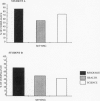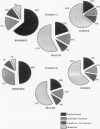Abstract
The focus of this study was the description and classification of verbal operants as described by Skinner (1957) that were used by a resource room teacher and two regular education teachers, the compliance responses of two students identified as learning disabled who attended all three classes, and the actual tasks that existed in each setting. These descriptions were used to compare the similarities and differences that may account for student success in a resource classroom and lack of success in mainstream classrooms. The results indicated that the verbal operants could be used to determine the tasks that existed in each setting. Comparisons showed that the greatest differences among the settings existed in the type of “mand” stated, the proportion of instructional to management “mands,” the frequency of compliance to instructional “mands,” and the teacher consequence for compliance or non-compliance with “mands.”
Full text
PDF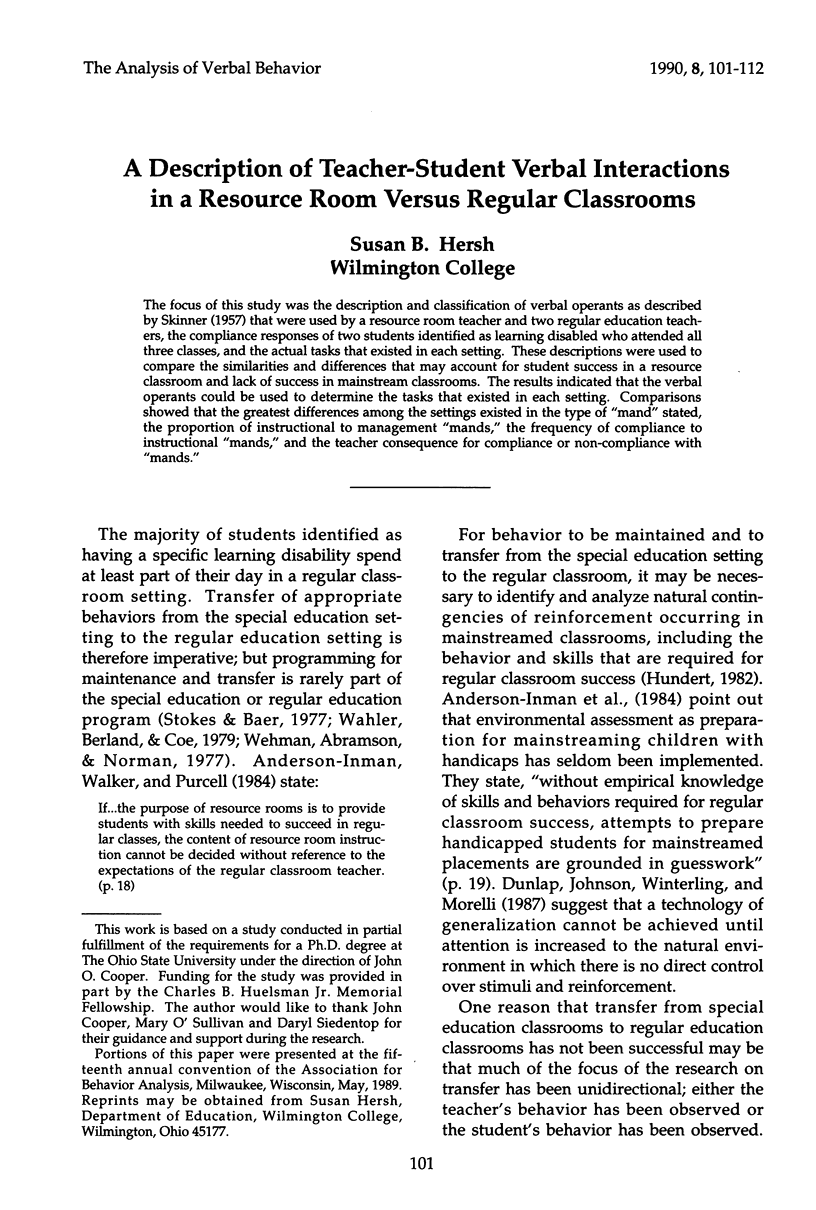
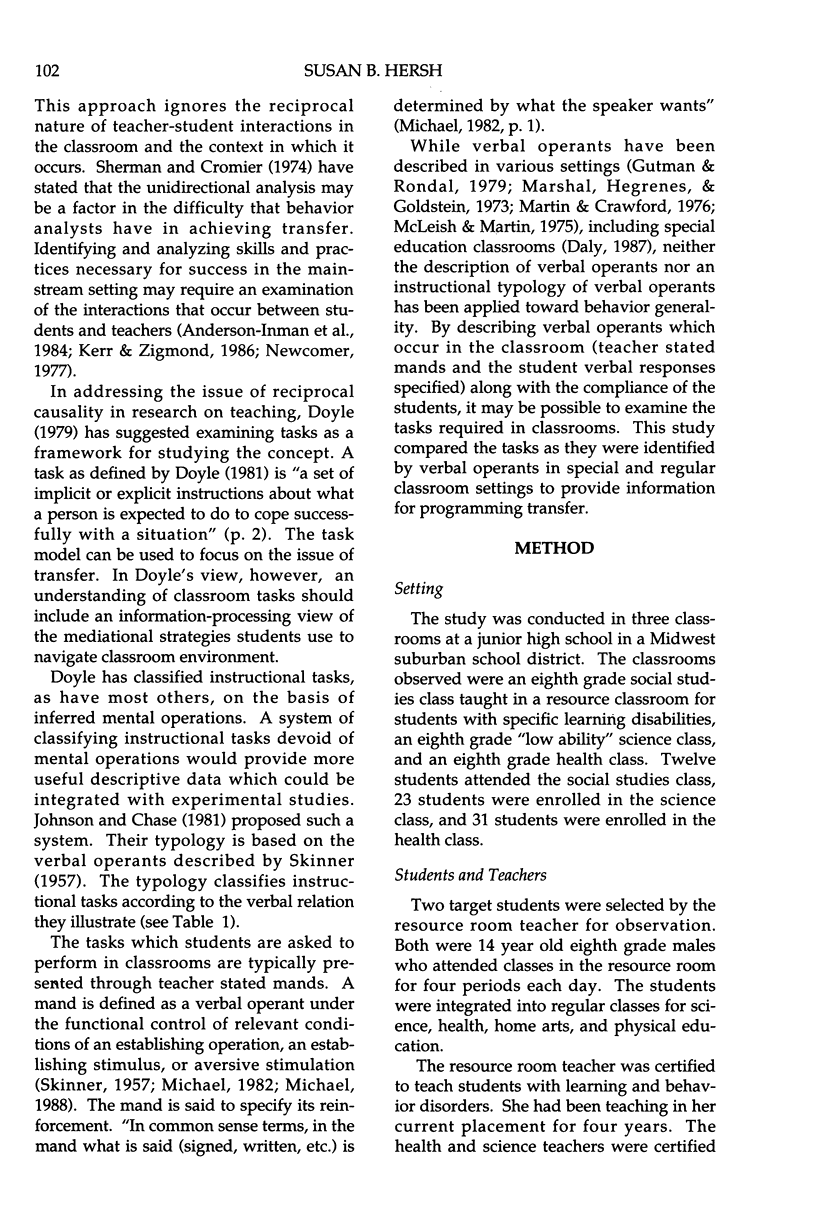
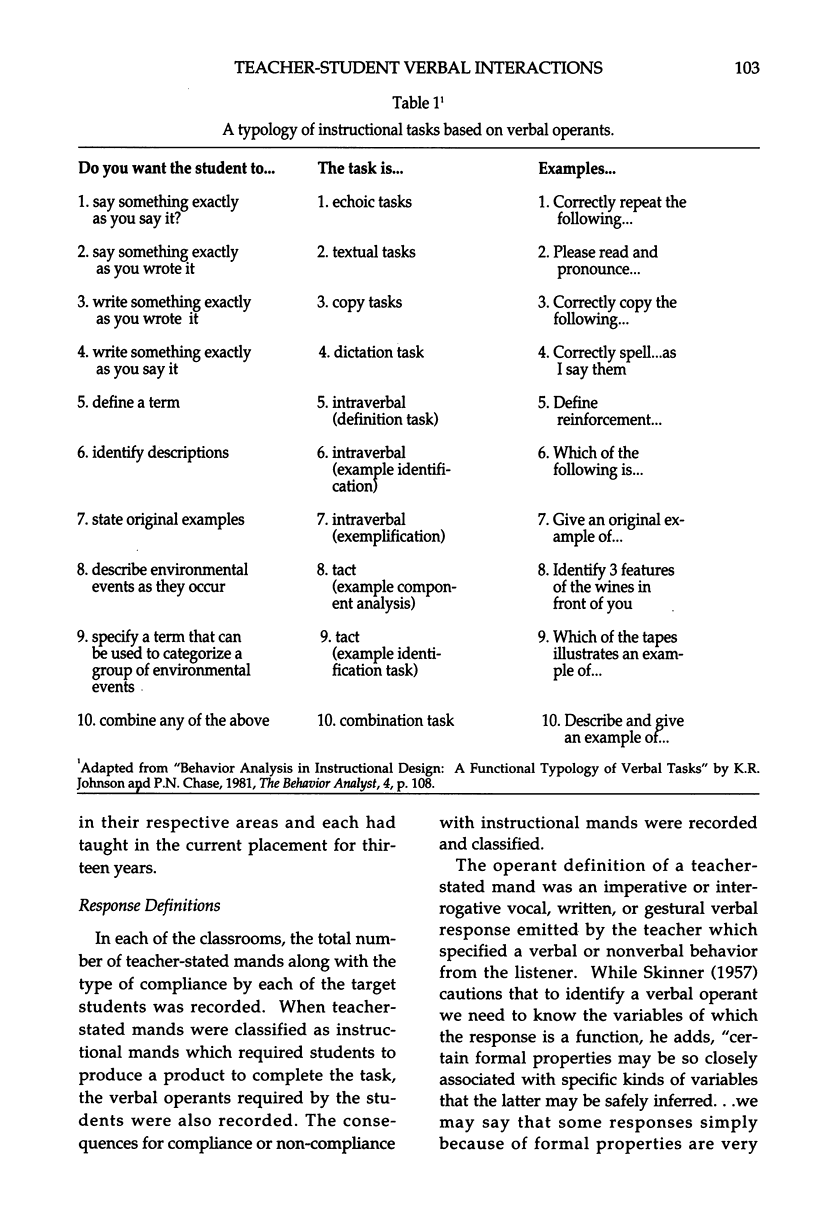
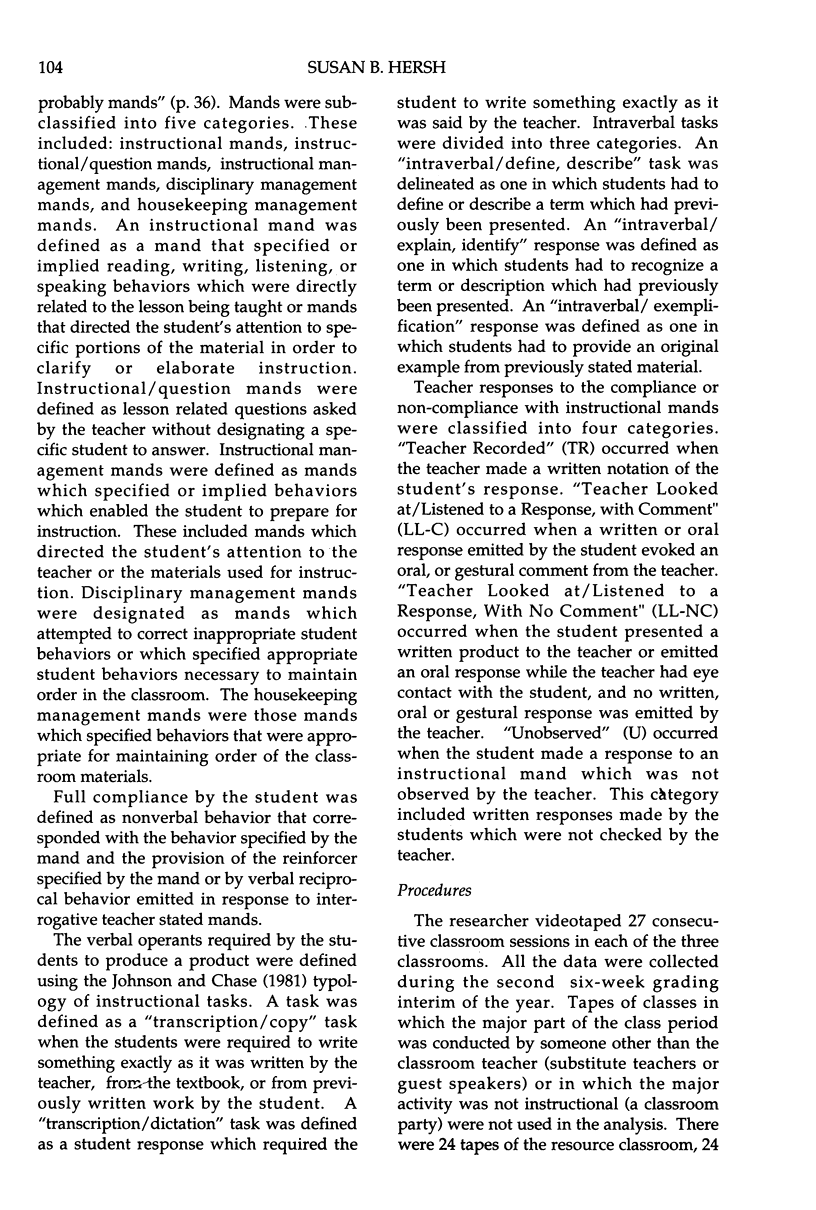
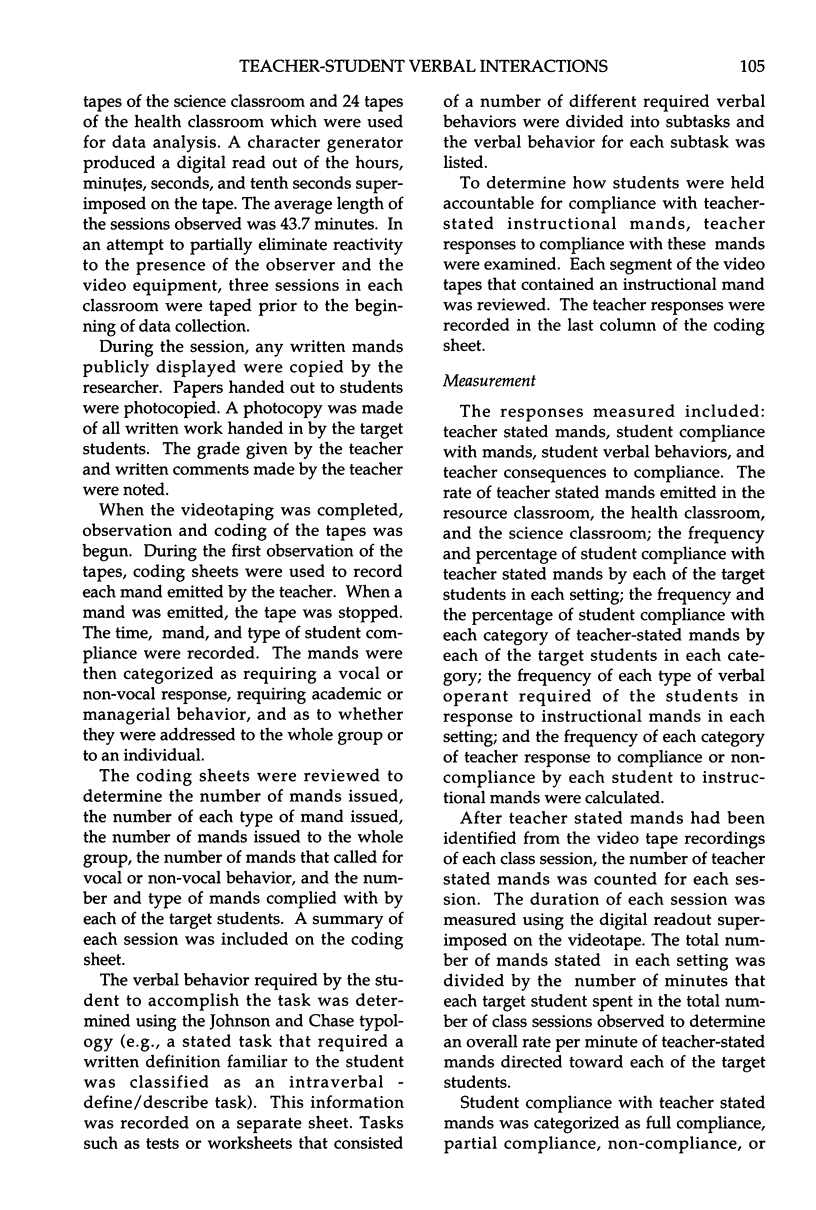
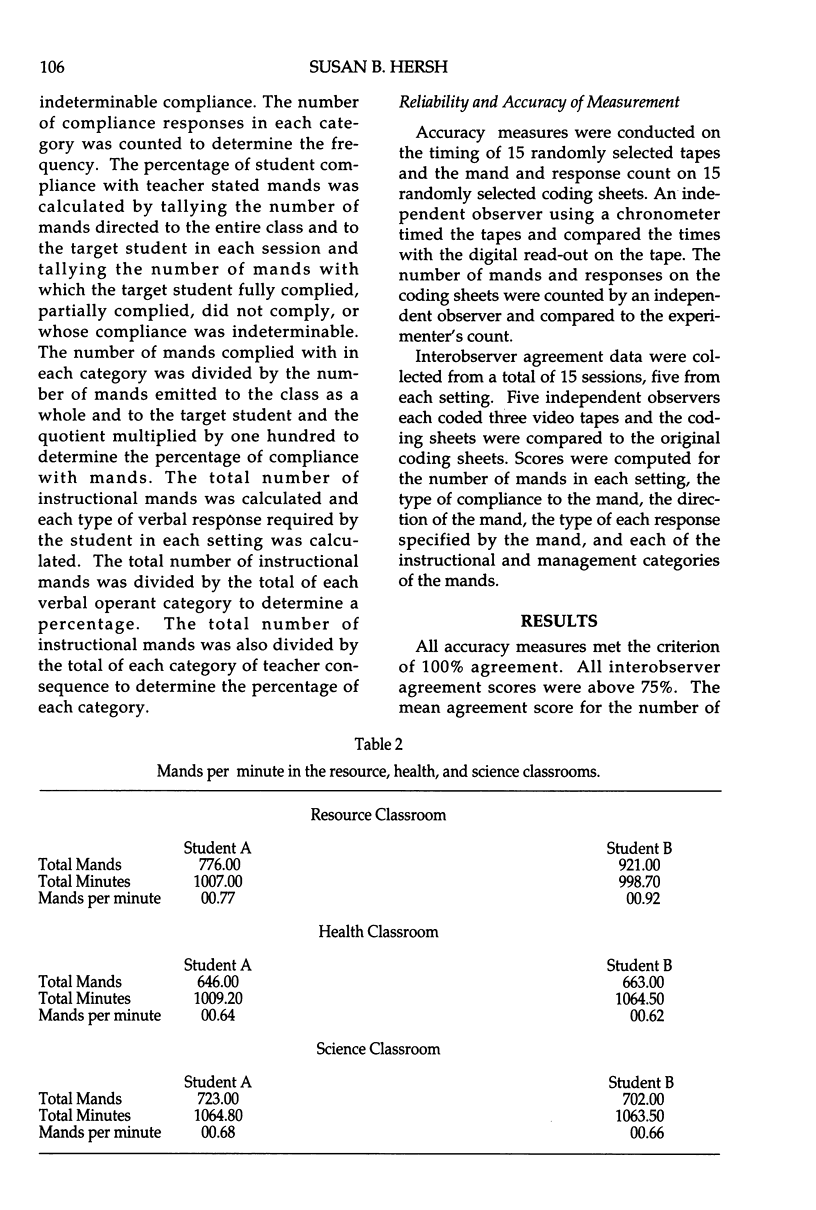
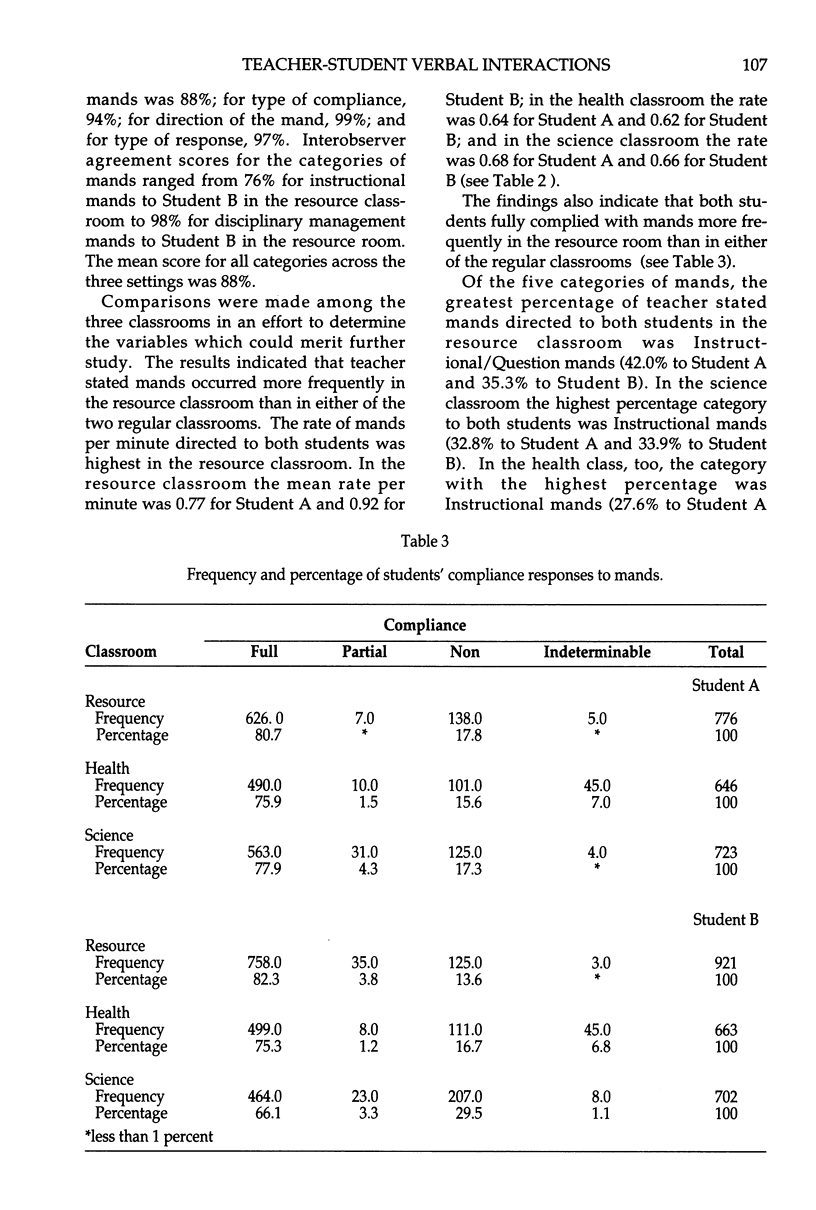
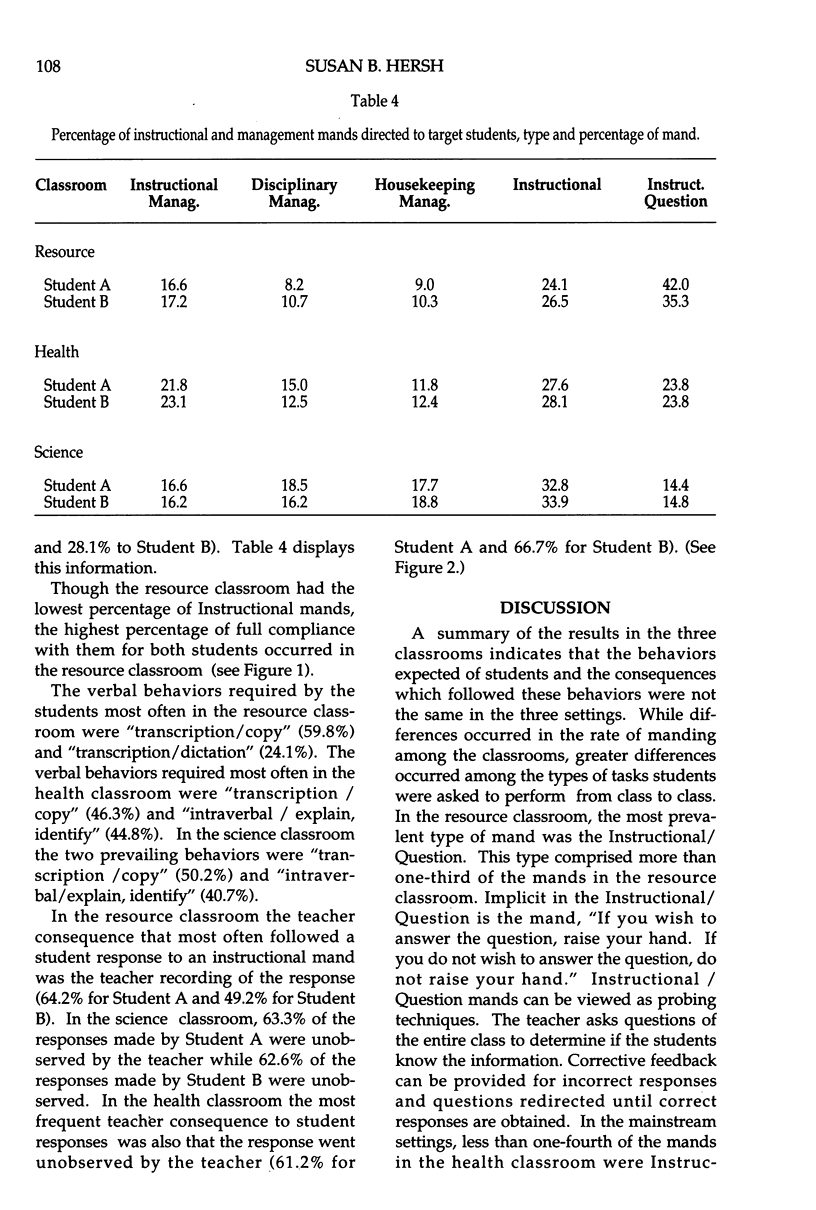
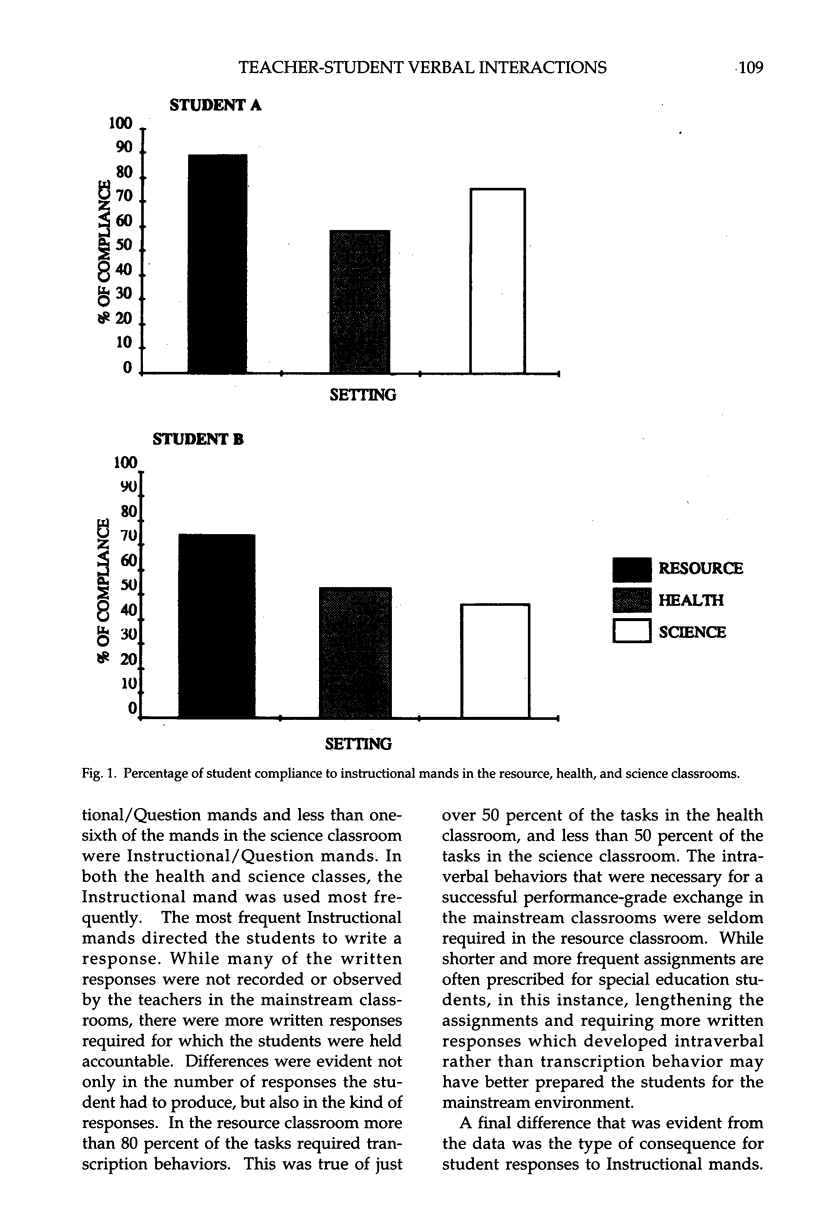
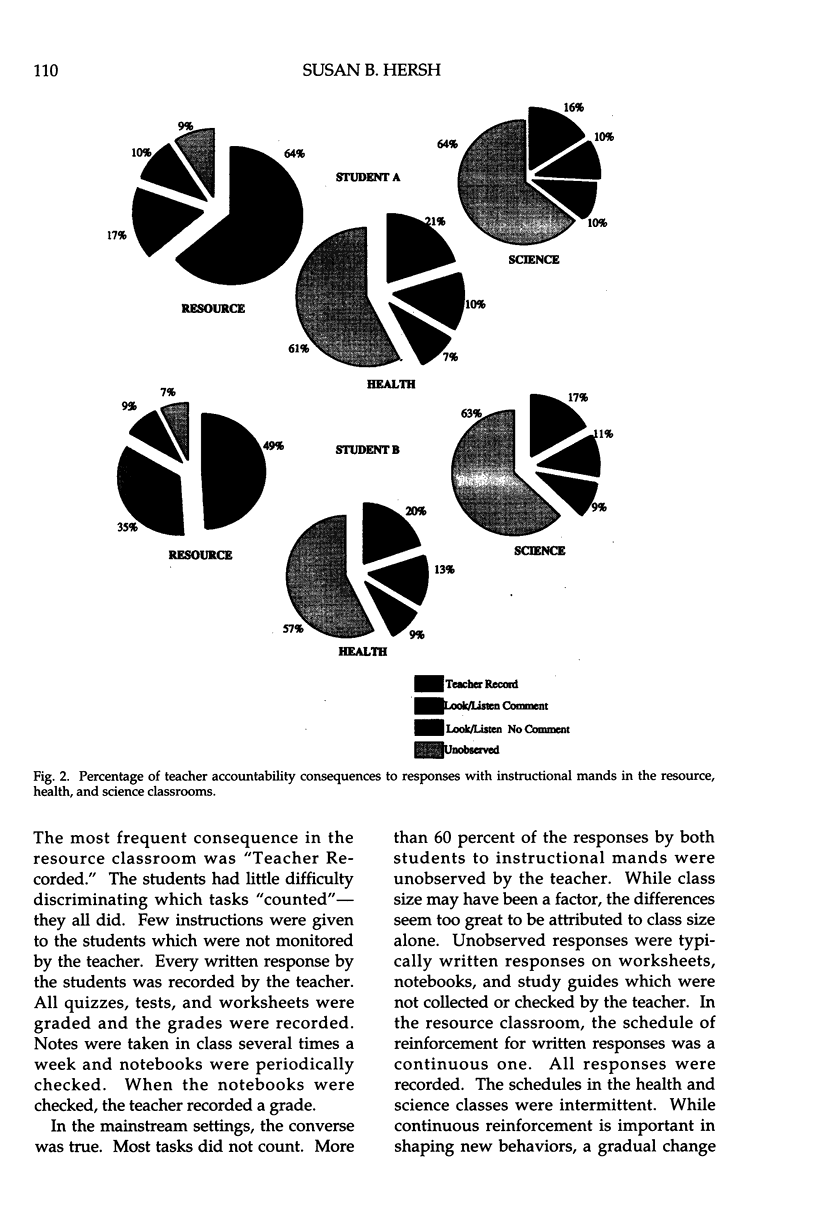
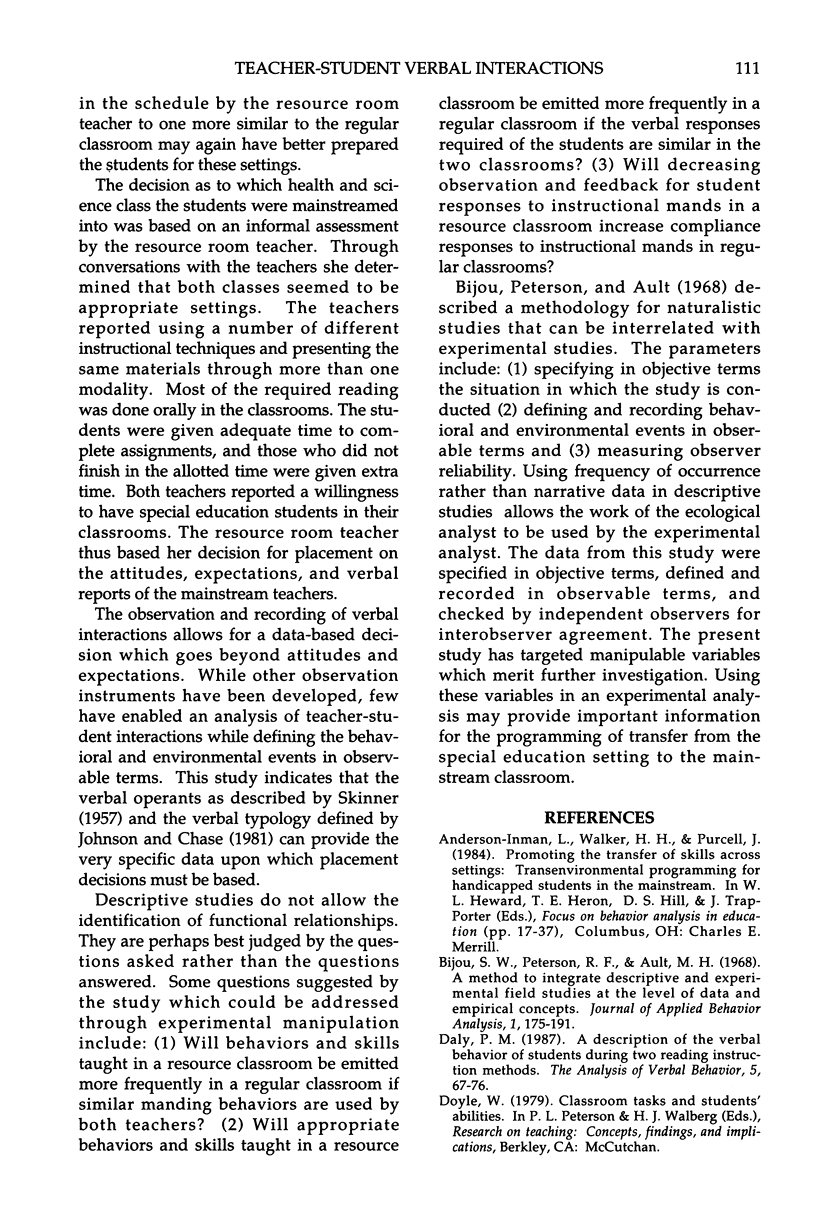
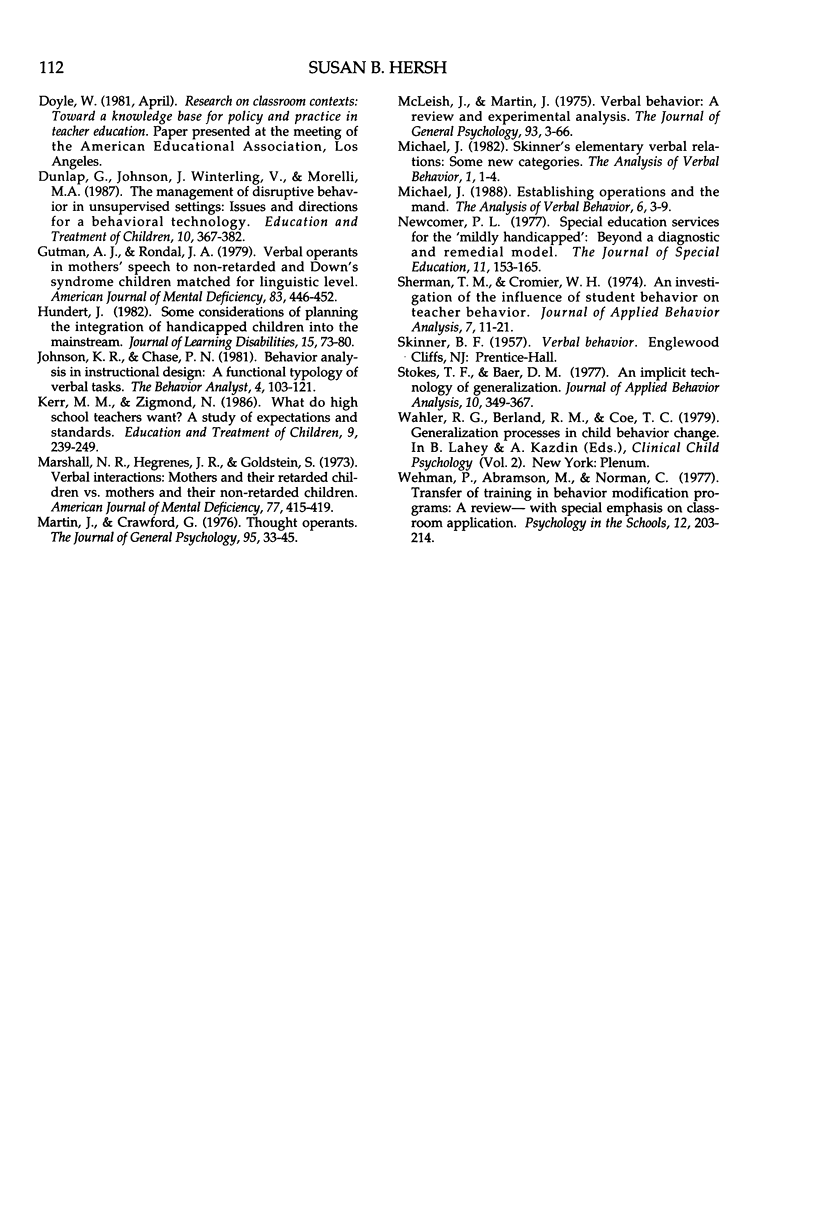
Images in this article
Selected References
These references are in PubMed. This may not be the complete list of references from this article.
- Bijou S. W., Peterson R. F., Ault M. H. A method to integrate descriptive and experimental field studies at the level of data and empirical concepts. J Appl Behav Anal. 1968 Summer;1(2):175–191. doi: 10.1901/jaba.1968.1-175. [DOI] [PMC free article] [PubMed] [Google Scholar]
- Gutmann A. J., Rondal J. A. Verbal operants in mothers' speech to nonretarded and Down's syndrome children matched for linguistic level. Am J Ment Defic. 1979 Mar;83(5):446–452. [PubMed] [Google Scholar]
- Hundert J. Some considerations of planning the integration of handicapped children into the mainstream. J Learn Disabil. 1982 Feb;15(2):73–80. doi: 10.1177/002221948201500202. [DOI] [PubMed] [Google Scholar]
- Johnson K. R., Chase P. N. Behavior analysis in instructional design: A functional typology of verbal tasks. Behav Anal. 1981 Fall;4(2):103–121. doi: 10.1007/BF03391859. [DOI] [PMC free article] [PubMed] [Google Scholar]
- Marshall N. R., Hegrenes J. R., Goldstein S. Verbal interactions: mothers and their retarded children vs mothers and their nonretarded children. Am J Ment Defic. 1973 Jan;77(4):415–419. [PubMed] [Google Scholar]
- Sherman T. M., Cormier W. H. An investigation of the influence of student behavior on teacher behavior. J Appl Behav Anal. 1974 Spring;7(1):11–21. doi: 10.1901/jaba.1974.7-11. [DOI] [PMC free article] [PubMed] [Google Scholar]
- Stokes T. F., Baer D. M. An implicit technology of generalization. J Appl Behav Anal. 1977 Summer;10(2):349–367. doi: 10.1901/jaba.1977.10-349. [DOI] [PMC free article] [PubMed] [Google Scholar]



